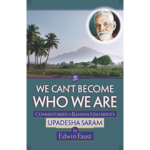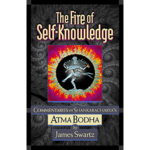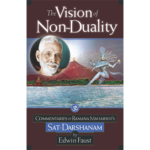Vandana: I have been reading about Vedanta and find it very effective in daily life. I would like to make an effort to design a course for kids. I feel kids should be tuned to awareness so that they become aware and are more mature to handle their lives as they grow.
Sundari: Living life with Self-knowledge (Vedanta) is the only sane and intelligent way to live, and certainly the only way to be free of existential suffering and ignorance. You say you are “reading” Vedanta, but do you understand that there is a methodology to the teachings that must be unfolded for the knowledge to be truly effective? Reading Vedanta without being properly taught, the mind will have the tendency to interpret the meaning of the teachings according to our vasanas. What is your sadhana?
There are people many people in the Vedanta world who would like to design a course for teaching children, but we do not know of anyone off-hand who is actively doing so. We would love to design such a course ourselves, but just don’t have the time, as important as it is, although I do cover this topic in my forthcoming book Enlightened Lifestyles. We have a good friend and supporter of ShiningWorld, Megan Knight, a Self-realized person and expert on enlightened parenting (meg@enlightenmentforhouseholders.com, www.enlightenmentforhouseholders.com).
Here is a short excerpt relating to this topic, from my book:
Teaching Children: The Five Most Important Aspect to Enlightened Parenting
1. The dharma of a parent.
2. Healthy values and boundaries.
3. Karma yoga, surrendering results of action, acceptance of results, the Power of No.
4. A devotional attitude, practice or ritual to learn gratitude.
5. Mind management: a simplified teaching on the three gunas to learn self-objectivity.
1. Parental Dharma: Teach Self-Reliance
Parental dharma is taking care of the physical, intellectual, emotional and spiritual needs of the children, biological or otherwise, that Isvara has entrusted to our care. Parents should encourage jivas assigned to them to develop their innate gifts and talents so that they find and follow their own svadharma (inborn nature, talents and abilities). You cannot do this by forcing on them what you think they “should be.” It is the dharma of a parent to teach children how to live in the world in such a way that they develop self-reliance and the self-confidence that permits them to make healthy choices for themselves and become independent of YOU as quickly as possible.
Many parents mistakenly believe that they are “loving” their children by overpowering them with love, but this is very often simply indulging the parent’s need for love from their children. It is abusive to your children to make them too dependent on you; they are supposed to leave you and grow independently of you. Most of the problems children experience is the result of neglectful, abusive or over-protective parents. Abuse takes many forms, and it can be in the form of abdication of your dharma as parents because of their own needs. Child psychologists will tell you that when they see problem children, such as children who are put on socially acceptable drugs like Ritalin, it is the parents who are the real problem, not the children.
It is not news that parents are the main cause of their children’s dysfunctional adult lives. If you look around, it is easy to see that most parents, with little or no Self-knowledge, have very little to teach their children, other than “raising” them. All too often, many so-called adults have never individuated or become mature themselves; they are still emotional needy children. Becoming an adult is not a given; it is learned and developed as the child grows up, learning what it means to be an adult from a mature adult.
The greatest gift you can give children is Self-knowledge. However, beyond the basic human need for shelter and food, children need to know they are loved and seen. They need to know they can trust you because you will not lie to them. You may not be a perfect parent (whatever that is) but you are authentic, flawed or not. You are consistent and do your best for them, which may well be to not give them what they want. Giving your best may mean you are not always the best you can be, but as long as you are honest with them and love them, they accept fallibility with amazing equanimity.
Give generously to your children, but do not over cater to them, as much as it may seem like they enjoy it. It does not serve them! Above all, do not abdicate your responsibility as the adult in charge to your child. They will not thank you for it!
2. Teach Healthy Values and Boundaries
Whether or not we are knowledge-seekers, we have a lot to model and teach our children. It is important to keep in mind that although you think they are “your” children, they are neither children, nor are they yours, really. They are the Self, appearing in small bodies entrusted to your care. The best you can do for them is to live the knowledge; teach by example, and most importantly, by what you value. Children will take on what their parents’ values by osmosis. It is impossible to hide from our children; they see everything.
Construct healthy boundaries for them and discipline them non-violently. Teach them honesty, integrity, consideration and self-reliance by modelling it for them. Children without boundaries or discipline are always insecure and unhappy, as if they are playing on the face of a steep cliff face, terrified of falling any minute. Non-fanatical but firm discipline is like constructing a wall on the cliff face so they can play where they want to, knowing they are protected. The wall or boundary that protects your child best is always knowledge, given to them in the form of honesty, good values, consistent and wise guidance, and of course unconditional love.
Sometimes, it may take very firm parenting to protect your children and teach them boundaries. Children are born to test us, it is a natural part of growing up. But once you have set down a rule, be firm about it, do not negotiate with the child. A child that is allowed to control its parents is an unhappy child, and you are not helping them mature responsibly.
3. Karma Yoga and the Power of No
Karma yoga is common-sense knowledge because everyone actually knows that we are not in charge of results. This may be difficult for very young children to understand, but it is possible. When children are very demanding and want what they want, the way they want it, when they want it, teach them the value of accommodation and letting go of results. Do not yield to their gratuitous desires, for their sake. Be prepared to be uncomfortable as you hold firm to your position of “NO” when pushed to fulfil their gratuitous desires. Gently and firmly help your child to move from passion to dispassion, explaining Isvara to them in whatever language works best. Don’t teach that Isvara is a big daddy or mommy but it is everything that they see and feel, the creator and sustainer of all life. Teach them to consider others in their environment, to be considerate and kind. Teach them the value of rules without compromising their value for freedom.
2. A Devotional Practice
A devotional practice helps children to connect with their inner divinity as the Self, to feel gratitude for what life brings them and take responsibility for their own happiness, even if it is just lighting a candle every day, creating an altar or sacred space where children feel they can connect and be still. If you have never done this, you will be surprised how receptive most children are to the sacred. Choose a symbol of the Self for the altar; any religious or cultural background they are most familiar with works. If you are not religious or do not relate to spiritual icons, it can be a simple thing, just something they understand and to which they can relate, something beautiful. When children learn to pray and give thanks, it helps them to feel safe. This is particularly useful to help kids move through loss, like when someone close, even a beloved pet, dies.
3. The Guna Teaching
Teaching guna yoga to children gives them a huge advantage in their lives. It helps children to live happy lives by dealing with the ups and downs of life in a healthy way. Learning to identify and manage the gunas produces the all-important ability to observe themselves objectively, laying the groundwork for discrimination, the main qualification for Self-knowledge.
The guna teaching can be easily adapted in a simple way for children by using language with which they can identify. Using comics, animation or Disney characters works well. The marketing world has long cottoned onto rajasic, tamasic and sattvic archetypes, to its advantage. When a child is in a particular guna, positive or negative, you can help them to gain objectivity by making a game of identifying the rajasic, tamasic or sattvic character they are acting out. You could make up your own names for rajas, tamas and sattva; make them paint or draw pictures of how they see these energies.
~ Om, Sundari











